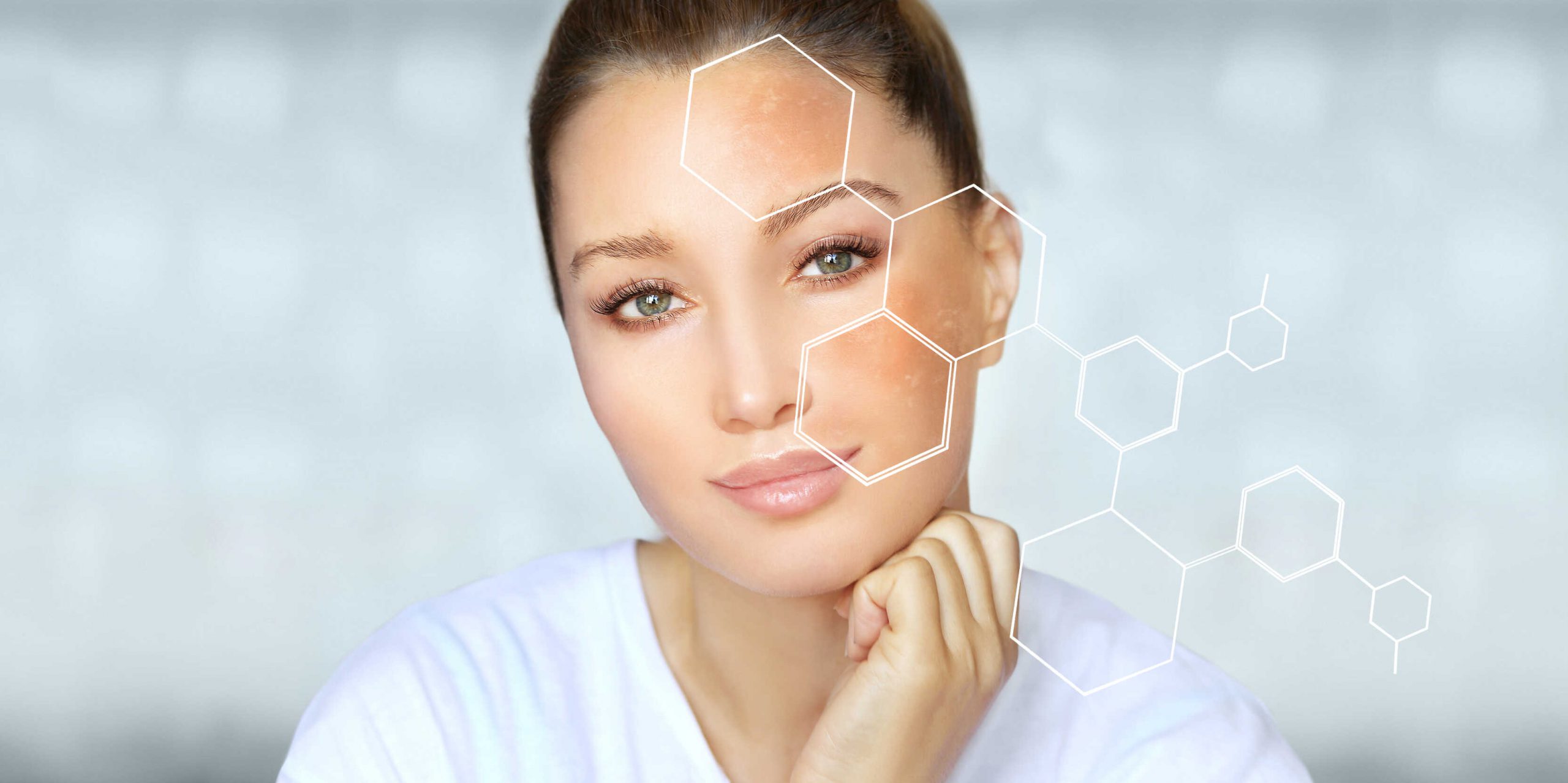Table of Contents
Facts and Fallacies About Skin Discoloration: From Understanding Causes to Effective Skincare
Skin discoloration is a widespread concern that plagues people of all ages. These blemishes can appear on your face, hands, décolletage, or arms, often detracting from your overall appearance and causing self-consciousness. But before you splurge on an expensive lightening cream or book a series of laser treatments, it’s crucial to debunk the myths surrounding skin discoloration. With a clear understanding of these misconceptions, your battle for an even skin tone becomes more effective, yielding long-lasting results.
Myth #1: Sun Exposure is the Sole Culprit Behind Discoloration
While excessive sun exposure is indeed the primary culprit behind skin discoloration, it’s not the only factor at play. Ultraviolet (UV) radiation stimulates melanin production, the skin’s natural pigment, leading to the formation of freckles, sunspots, and melasma. However, sun protection isn’t the only weapon in your arsenal against uneven skin tone.
Here are some other contributing factors:
- Hormonal Fluctuations: Pregnancy, menopause, and hormonal birth control can disrupt hormonal balance, leading to discoloration, particularly on the face.
- Genetics: Some individuals are simply more prone to discoloration due to a genetic predisposition towards melanin overproduction.
- Skin Inflammation: Healing wounds, acne, and irritated skin can leave behind post-inflammatory hyperpigmentation, especially with improper care.
- Certain Medications: Specific medications, such as antibiotics or hormonal drugs, can increase sun sensitivity and contribute to discoloration.
Myth #2: Freckles Can Be Permanently Eradicated with DIY Methods
Freckles are small, brown spots commonly found on the face, arms, and shoulders in individuals with lighter complexions. They’re determined by genetics, and while not a health concern, many desire their removal for aesthetic reasons. Unfortunately, DIY solutions like lemon juice or dandelion milk are largely ineffective and can even irritate the skin.
For a more permanent solution, consider consulting a dermatologist or aesthetician. They can recommend treatments like chemical peels, laser therapy, or intense pulsed light (IPL) that effectively lighten freckles without compromising skin health.
Myth #3: Lightening Products Always Irritate the Skin
Lightening products contain active ingredients that inhibit melanin production and diminish existing discoloration. Initially, these products might cause mild stinging or itching, especially for those with sensitive skin.
However, modern lightening formulas are becoming increasingly gentle and enriched with soothing ingredients to minimize irritation. When choosing a product, look for ingredients like niacinamide, azelaic acid, arbutin, or vitamin C.
Myth #4: Mechanical Scrubs are the Answer to Discoloration
Mechanical scrubs rely on abrasive granules to exfoliate the top layer of skin. While they may temporarily even out skin tone by removing the surface layer with discoloration, using them too frequently or with excessive force can irritate the skin and exacerbate the problem.
Chemical peels are a far better option for tackling discoloration. They contain exfoliating acids that penetrate deeper than mechanical scrubs, lightening blemishes and stimulating skin renewal. However, remember that chemical peels can vary in strength, so consulting a professional is crucial to determine the most suitable option for your skin.
Myth #5: Sun Protection Isn’t Necessary on Cloudy Days
Even on cloudy days, UV rays penetrate through the clouds and can damage your skin. Consistent sun protection is vital year-round, but especially during the summer months. Apply a broad-spectrum sunscreen with SPF 30 or higher daily, even if you don’t plan on spending extended periods outdoors. Remember to reapply sunscreen regularly, particularly after sweating, swimming, or toweling dry.
Myth #6: You Can Ignore Discoloration
Skin discoloration can be more than just an aesthetic concern. In some cases, it might signal underlying skin conditions. In rare instances, these blemishes can develop into skin cancers. Therefore, it’s important to regularly monitor your discoloration and consult a dermatologist if you notice any changes, such as an increase in size, shape, or color.
Conclusion: A Well-Informed Approach to Discoloration
Skin discoloration is a common issue, but it’s one you can effectively address. Demystifying the myths surrounding it is the first step towards achieving a healthy and radiant complexion. By understanding the underlying causes and opting for appropriate skincare practices under the guidance of a dermatologist, you can gain control over discoloration and enjoy an even skin tone.










